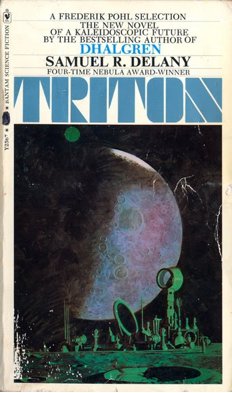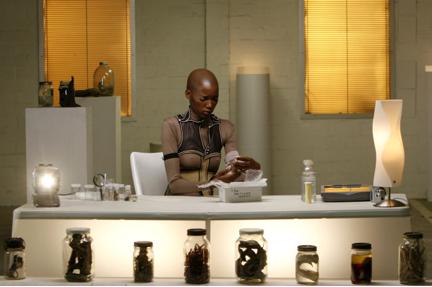In our dystopian present, the term speculation is associated with an epistemology of greed, a sanctioned terrorism, and a neo-imperialism organized around the capture of abstract futures and the subjugation of transnational labor forces. Financial speculators gamble with everyone’s lives, and our times would seem to foreclose on any future at all for many.
But speculation means something else for those who refuse to give its logic over to power and profit. To speculate, the act of speculation, is also to play, to invent, to engage in the practice of imagining. And, as Ernst Bloch said, it may be in our imaginative worlds that we catch glimpses of utopian possibility beyond our present paradigm. At a moment when so many have been struggling to enact alternatives to the depressing world produced by Wall Street’s speculative failures, we need to practice imagining now more than ever.
Imperial Speculation: The Rhodes Colossus from Punch, or the London Charivari, December 10 1892.
Speculation accompanies the idea of Progress, as speculative capitalist excursions in the eighteenth and nineteenth centuries carried traders, settler colonialists and scientists alike. The alien races knew what it meant to be discovered and traded by these speculators; they understood what the underside of Progress felt like. The racialized, the queer, the deviant, the poor, all knew what it meant to be scrutinized with the same classificatory instruments. Many of the alienated have always known what a seemingly futureless horizon looks like, and may not be as shocked to find that, as Bifo reminds us “we can no longer think the flow of time within a frame of progressive becoming” (126). Some who have been fractured, erased, dislocated, have long created futures, as Sun Ra did, “on the other side of time” (Space is the Place).
The contributors to this Periscope trace awesome futures in science (and other speculative) fictions and expressive arts. They explore weirdly alter-dimensional universes, bodily incarnations with enhanced sensory abilities, and revolutionary forms of intimacy and interdependence. Many of these pieces also critique the erasures, exclusions, and failures of speculative cultural production. “If science fiction has any use at all,” writes Samuel R. Delany, “it is that among all its various and variegated future landscapes it gives us images for our futures … And its secondary use … is to provide a tool for questioning those images, exploring their distinctions, their articulations, their play of differences” (35). These pieces do more than celebrate speculative imaginings and alternative potentialities. The discussions of literary, visual and aural speculation collected here do not simply affirm or advocate for particular agendas, or concern themselves with blueprints for a perfect world. Yet they all consider speculation as the crucial enactment of the impossible.
Speculative fiction: Triton by Samuel R. Delany. 1976.
The reach and range of speculative exploration goes beyond a simple politics of subjecthood, that is, with a humanist concern with the restoration or reclamation of the sovereign self, or whole and normalized human. It goes beyond a “yearning for human rights, a struggle for inclusion within the human species” (Eshun, 00[-006]). The stability of the human no longer holds in the biological sciences, where in the early 21st century the molecularization of life has led to an epistemological change in our understandings of ‘life itself’ (Rose, 15-16). Biotechnology is changing what it means to be human, and speculative imaginaries may release us from the need for humanist recognition.
Science fictions play with, ignore and often presage developments in biological science. They offer us much freer reign in these shifts of biological understanding. For a start, they can loosen these scientific explorations from their moorings in capitalist economic, military and corporate interests and instead create fantastically anomalous ontologies. Kodwo Eshun writes that speculations can come in the form of expression from the “Outer Side.” With his examples the work of musicians including Alice Coltrane and Sun Ra and Tricky and Martina, such expression “alienates itself from the human. It arrives from the future.” “The human,” he concludes, “is a pointless and treacherous category” (00[-006] — 00[-005]).
Aural speculation: Tricky
Instead of universal truths and a stable universe, speculations inhabit a breach, a space of disobedience, of awe — the locus of which is a “radical quotidian sublime,” as China Miéville put it during his interview in this collection.
The pieces gathered here offer a variety of iterations of a radical, quotidian sublime in modes of speculation other than those of capital and progress. For Jayna Brown, it is to be found in embodied sensations between madness and sanity; for Moya Bailey, in critical negotiations with Octavia Butler and Janelle Monáe’s speculative depictions of power, ability and interdependence. In Alexis Lothian’s essay it appears in the transformations that readers of Samuel R. Delany’s queer speculative histories might encounter and perform — a prospect continued in Tamara Ho’s unpacking of Larissa Lai’s hybrid, poly-species beings, alternate processes of xenogenesis and queer forms of kinship. Alex Weheliye and Tavia Nyong’o engage with speculations that confront the negativity of the present: Weheliye explores global regimes of racial oppression and the formation of ‘bare life’ in the works of the musical artist MIA, yet shows us how the seeming cliche of a racial allegory can transform into speculative “agitprop.” Similarly, Nyong’o demonstrates that even the most commodified of bodies, the cyborgs of the Battlestar Galactica TV remake, have the potential to illuminate the complexities of transgression and domination and question the sanctity of the human.
Our interview with China Miéville takes up questions of the relationship between politics and science fiction, the meanings of the monster and questions of the colonial encounter in a genre formed during the halcyon days of imperialist conquest. Elizabeth Turgeon and Andrea Hairston continue this focus on colonialist power relations, engaging with ways speculative histories and futures can both challenge and buttress settler colonialism in the aftermath of genocide. Turgeon reminds us of the ways liberal speculative fictions can reinforce the foreclosure of Native futures, demanding their replacement with the full range of futures and presents. And Hairston draws together themes from many of the essays through speculations on performance, dance, fiction, and media that repudiate a disembodied, capitalized, imperial vision of the future.
New African speculative cinema: Pumzi. Dir Wanuri Kahiu, 2009.






